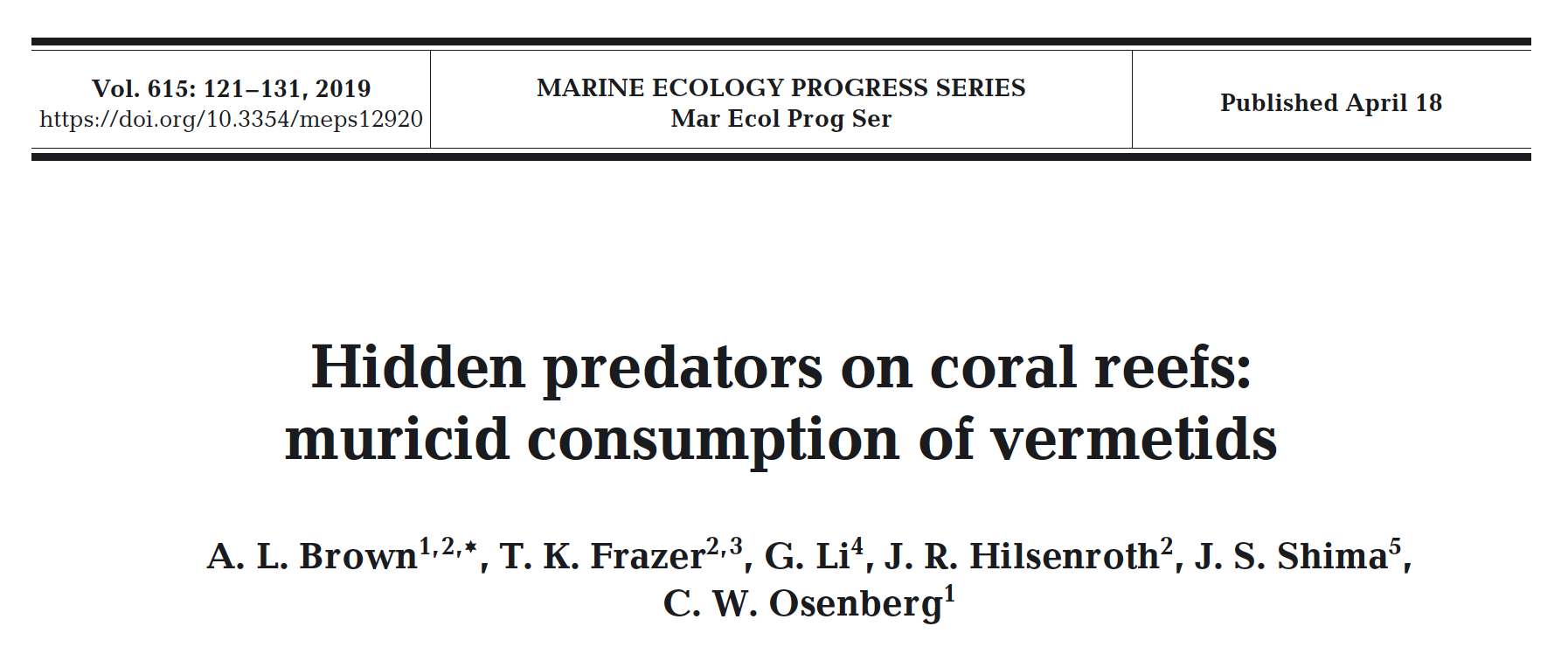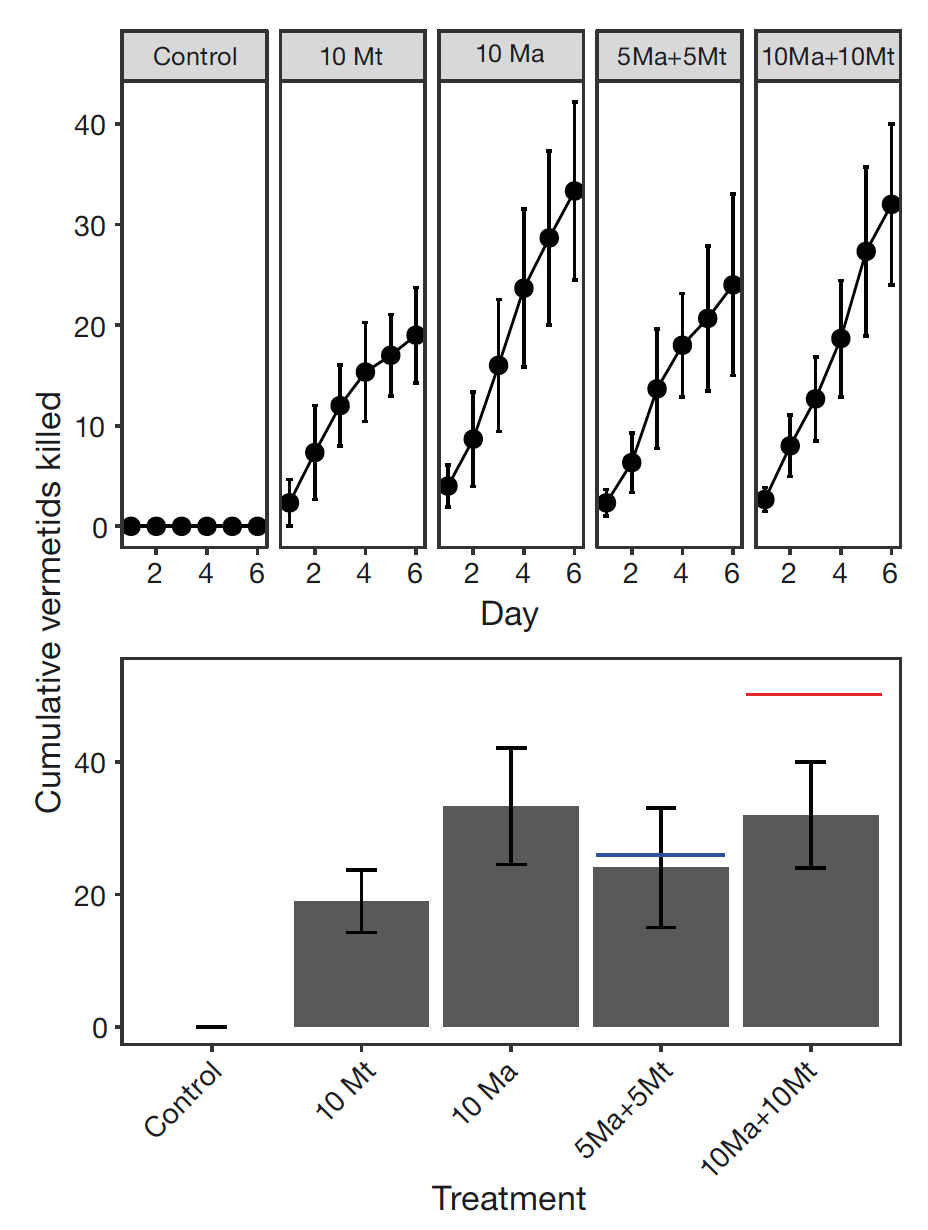
 Our team's paper (pdf), led by Anya, on the interaction between muricids and vermetids came out today in MEPS. Abstract: Predators, through their effects on prey densities, sizes, and behaviors, can shape ecological communities. Thus, quantitative assessments of predator−prey relationships are key to
Our team's paper (pdf), led by Anya, on the interaction between muricids and vermetids came out today in MEPS. Abstract: Predators, through their effects on prey densities, sizes, and behaviors, can shape ecological communities. Thus, quantitative assessments of predator−prey relationships are key to
understanding these effects. Here, we documented the patterns and processes underlying the effects of 2 predatory muricid gastropods, Mancinella armigera and Menathais tuberosa, on the sessile vermetid gastropod Ceraesignum maximum. We used a combination of field surveys and manipulative lab and field experiments to quantify muricid abundances, predator feeding rates, and effects of predator density on vermetid mortality. The 2 predators exhibited spatial segregation, with M. armigera being more common close to the reef crest and M. tuberosa increasing in density away from and shoreward of the reef crest. We demonstrated that recently killed vermetids were more common in the vicinity of M. armigera. Laboratory assays revealed that M. armigera killed 0.55 C. maximum predator^−1 d^−1, a rate that was ~60% greater than for M. tuberosa. Although the 2 predators were spatially segregated in the field, they did not demonstrate interference competition or intraguild predation in the lab. Consumption rates of C. maximum by M. armigera in the field were approximately equal to those quantified in the lab, and although consumption rates decreased over time, predator density had no effect on predator consumption rate. In addition, we observed no evidence of size selectivity by predators. This study is the first to quantitatively examine predator−prey interactions involving C. maximum, and our findings suggests that muricids can limit vermetid populations where both are present.